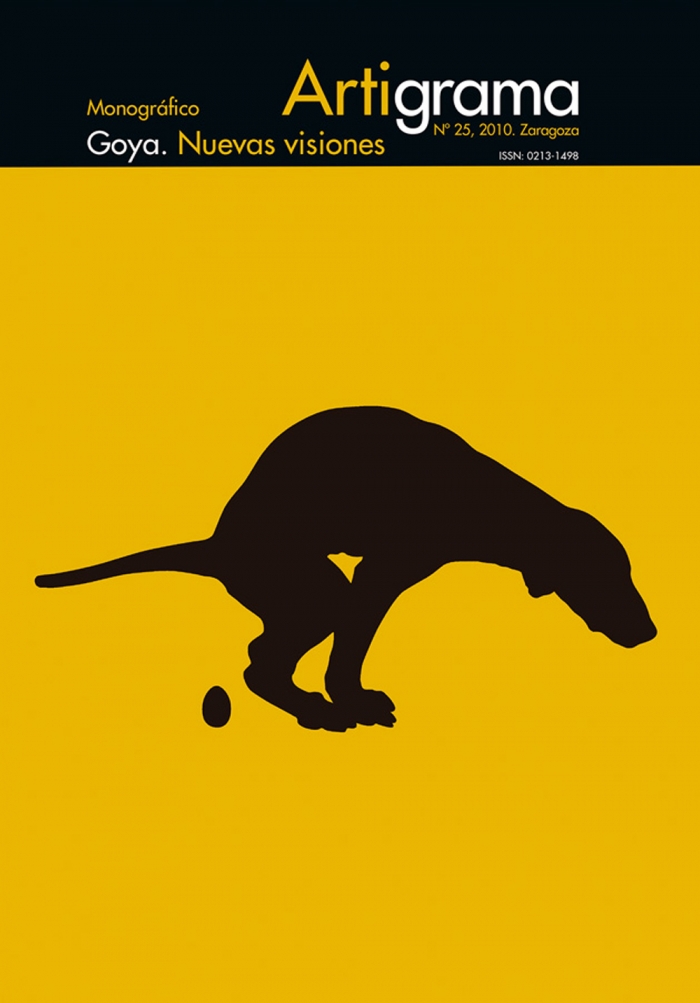Miyagawa Shuntei (1873-1914) y la serie Bijin juni kagetsu. Modas y costumbres tradicionales en el ukiyo-e de la era Meiji
DOI:
https://doi.org/10.26754/ojs_artigrama/artigrama.2010257584Palabras clave:
Miyagawa Shuntei, Ukiyo-e, Meiji, Arte de Japón, Museo de ZaragozaResumen
Resumen
Miyagawa Shuntei (1873-1914) fue un ilustrador japonés neotradicionalista especializado en el género bijin-ga (retratos de mujeres bellas). Shuntei muestra a mujeres y niños jugando, de la nueva burguesía de la era Meiji (1868-1912). Este artículo presenta un estudio de la serie Bijin juni kagetsu (Bellezas de los doce meses) de Miyagawa Shuntei, editada por Matsuki Heikichi en Tokio y datada en 1898-1899. En los doce trípticos de la serie, mujeres y niños visten del modo tradicional y disfrutan de su tiempo de ocio en hermosos paisajes ajardinados. Esta serie completa, Bijin juni kagetsu, se conserva en el Museo de Zaragoza (España) procendente de la colección de arte asiático de Federico Torralba.
Abstract
Miyagawa Shuntei (1873-1914) was a neotradicional Japanese illustrator specializing in the genre of bijin-ga (portraits of beatiful women). Shuntei show women and playing children of the new bourgois class of the Meiji era (1868-1912). This article presents a study of the serie Bijin juni kagetsu (Beauties of the twelve months) by Miyagawa Shuntei, edited by Matsuki Heikichi in Tokyo and dated in 1898-1899. In twelve charming tryptics, women and children wear traditional Japanese kimono clothing at their leisure time in beautiful landscaped gardens. This complete serie Bijin juni kagetsu by Miyagawa Shuntei is located in The Museum of Zaragoza (Saragossa, Spain), formerly Federico Torralba’s Asian art collection.
Key words
Miyagawa Shuntei, Ukiyo-e, Meiji, Japanese Art, Museum of Zaragoza.
Descargas
Referencias
Almazán, D. “Una joya bibliográfica hispano-japonesa: los cuentos y leyendas del Japón de Gonzalo Jiménez de la Espada editados como chirimen-bon por T. Hasegawa (Tokio, 1914)”, Artigrama, 23, 2008, pp. 781-801.
Almazán, D., “Horikiri no shobu (lirios de Horiki)” y “Octubre. Serie Bijin Junikagetsu”, en Almazán, D. y Barlés, E., Cerezos, lirios, crisantemos y pinos: La belleza de las estaciones en el arte japonés, Zaragoza, Fundación Torralba-Fortún, 2008, pp. 191-192 y 240-241.
Almazán, D., “Un artista japonés del periodo Meiji (1868-1912). Ogata Gekko (1859-1920) en las colecciones de Zaragoza”, en San Ginés, P., Cruce de miradas, relaciones e intercambios, Granada, CEIAP, Editorial Universidad de Granada, 2010.
Almazán, D., “Geishas, pagodas y jardines: los álbumes de estampas y albúminas como souvenirs para los viajeros en Japón del siglo XIX”, en Cabañas, M., Lopez-Yarto, E. y Rincón, W., El arte y el viaje, Madrid, C.S.I.C., (en prensa).
Baten, l., Playthings and pastimes in Japanese prints, Tokio, Shufu no tomo, 1995.
Brown, K. H. “Impressions of Japan: Print Interaccions East west”, en Javid, C., (ed.), Color Woodcut international. Japan, Britain and America in the Early Twen-tieth Century, Madison, Chazen Museum of Art, 2006, pp. 13-29.
Cantares de Ise (Ise Monogatari), Madrid, Hiperión, 1987.
Coats, B. A., Chikanobu: Modernity and nostalgia in Japanese Prints, Leiden, Hotei Publishing, 2006.
Hamanaka, S y Newland, A. R., Shin hanga: The female image: 20th century prints of Japanese beauties, Tokio, Abe Publishing, Hotei Publishing, 2000.
Inagaki, S., Children Represented in Ukiyo-e. Japanese children in the 18th-19th centuries, Osaka, Kumon Institute of Education, 1998.
Koyama-Richard, B., Kodomo-e: L’estampe japonaise et l’univers des enfants, París, Hermann, 2004.
Merritt, H. y Yamada, N., Guide to Modern Japanese Woodblock Prints: 1900-1975, Honolulu, University of Hawaii Press, 1992.
Merritt, H. y Yamada, N., Woodblock kuchi-e Prints. Reflections of Meiji Culture, Honolulu, University of Hawai’i Press, 2000.
Newland, A. R., Hotei Encyclopedia of Japanese Woodblock Prints, Amsterdam, Hotei, 2005.
Roberts, l., Dictionary of Japanese Artists, Nueva York, Weatherhill, 2000.
Sashi-e gaka Miyagawa Shuntei ten挿絵画家宮川春汀展 (Exposición sobre el ilustrador Miyagawa Shuntei), Tahara, Tahara shi hakubutsukan 田原市博物館, 2010.
Sharf, F. A., Takejiro Hasegawa: Meiji Japan’s Preeminent Publisher of Wood-Block Illustrated Crepe-Paper Books, Salem, Peabody Essex Museum, 1994.
Strange, E. F., Japanese Art: Japanese books and albums of prints in colour in the nacional Art Library South kesington, londres, Her Majesty’s Stastionery Office, 1893.
Strange, E. F., Japanese Illustration: A history of the arts of wood-cutting and colour-printing in Japan, londres, George Bell & Sons,1896 (reimpreso en 1904).
Strange, E. F., “The Japanese Collections in the National Art library, South Kensington Museum”, Transactions and Proceedings of The Japan Society, London, vol. IV, Londres, 1898, pp. 1-17.
Strange, E. F., “Landscape in Japanese colour-prints”, The Connoisseur, Londres, 1901, pp. 76-82.
Strange, E. F., “Modern Japanese colour-prints”, The Magazine of Art, 26, 1902, pp. 488-493.
Strange, E. F., The colour-prints of Japan: an appreciation and history, Londres, A. Siegle, 1904. Col. “The langham series of Art monographs”, vol. II.
Strange, E. F., Hokusai, the old man mad with painting, Londres, A. Siegle, 1906. Col. “the langham series of Art monographs”, vol. XVII.
Strange, E. F., “Toyokuni I and his theatrical colour-prints”, Transactions and Proceedings of The Japan Society, Londres, 1907.
Strange, E. F., Japanese colour prints by Utagawa Toyokuni I, Londres, Victoria & Albert Museum, 1908.
Strange, E. F., Las Estampas coloridas de Japón: Historia y apreciación, Madrid, Saenz de Jubera hermanos, Col. “Monografías del arte universal”, vol. vI, traducción de Eugenio álvarez, 1910.
Strange, E. F., Tools and Materials illustrating the Japanese method of colour-printing”, Londres, Victoria and Albert Museum, 1913.
Strange, E. F., Japanese colour prints, Londres, Victoria and Albert Museum, 1913.
Strange, E. F., The colour-prints of Hiroshige, Londres, Cassell, 1925.
Torralba, F, Beltrán, M., Ulibarri, J., Navarro, S. y Barlés, E., “Museo de Zaragoza: la Colección de Arte Oriental Federico Torralba”, Artigrama, 18, 2003, pp. 125-160.
Descargas
Publicado
Número
Sección
Licencia

Esta obra está bajo una licencia internacional Creative Commons Atribución-NoComercial 4.0.


